For over a decade, beginning around 1955, and then again during a short 1990s revival, the American Geographical Society (AGS) published a large series of colorful small booklets as part of an “Around the World Program,” each introducing countries in the space of about 60 pages. Copies of individual volumes or combination bundles can be found from sellers all over the web, and I recently picked up the Taiwan volume (1968, 64 pages, 21 color images).
In its decade long run, this series was edited by Alice Taylor, who studied geography at Columbia University and was also the editor of the AGS journal Focus from its launch in 1950 until 1977.1 Taylor also authored over a dozen of the Around the World volumes herself. According to the geographer Janice Monk, Taylor was one of the most important members of a small group of women to play key roles in the workings of the AGS at a time when academic positions for women geographers were rare. Monk argues, for example, that Focus journal and the Around the World Program booklets were publications that were key sources of income for the society with, at one point, monthly sales of the latter in the hundreds of thousands of copies.2
Apparently, these books were first targeted at children, and we can find advertisements for subscriptions to the series in Boy’s Life magazine in the 1950s. In 1962 the AGS published a multi-volume Around the World Program: Teacher’s Guide series filled with suggestions for teachers on how to use the booklets to teach geography to children in the classroom. In it you can find helpful suggestions like, “Ask the class why Japan is said to be in the Far East when a person usually travels west to reach it from Canada or the United States.”
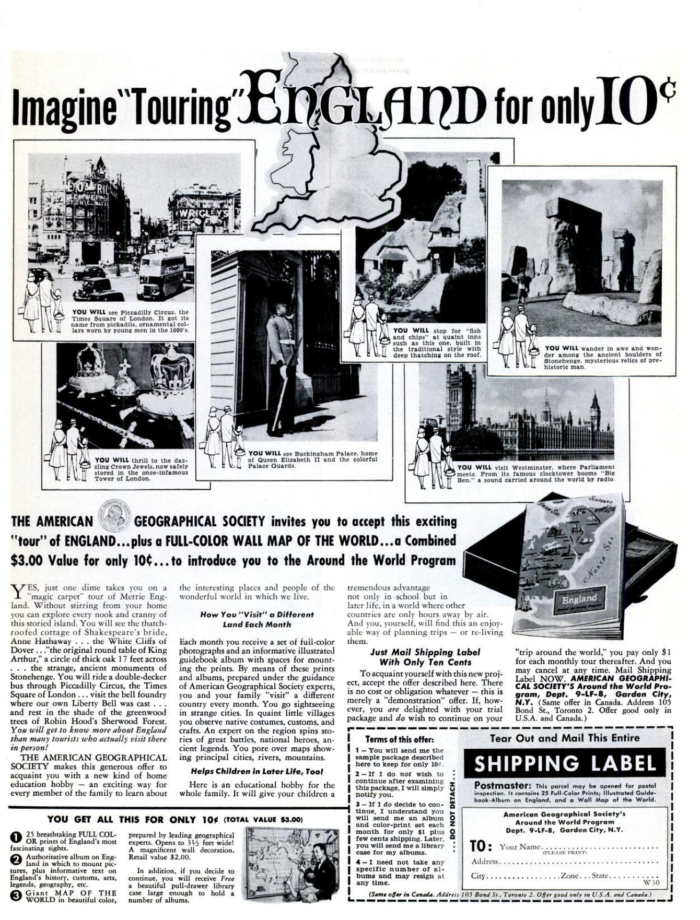
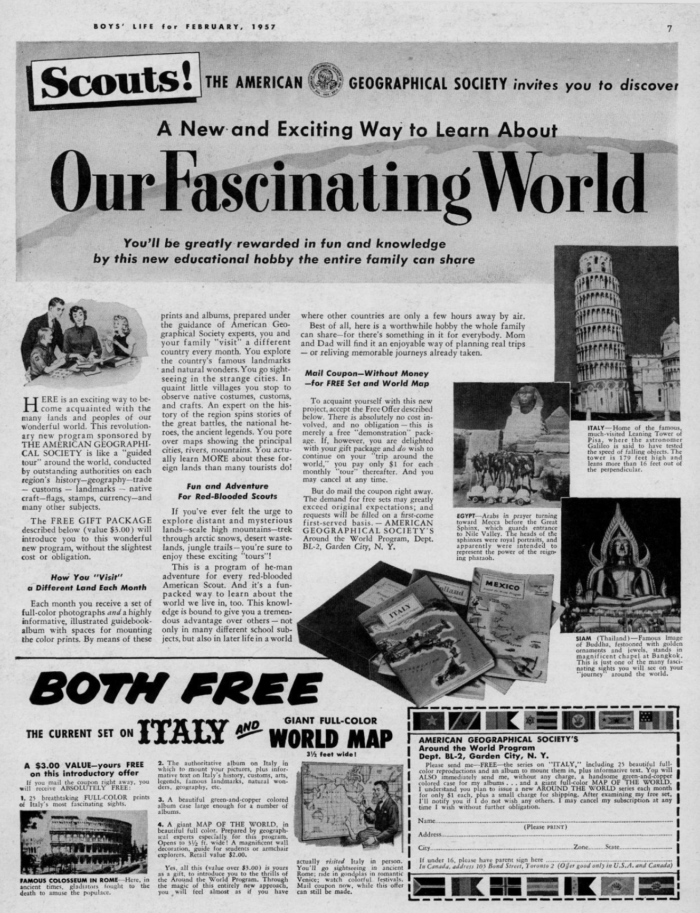
So what is the Taiwan volume like? The title, Taiwan (Formosa) doesn’t bother to attach awkward subtitles like the 1956 Let’s Visit Formosa: Island Home of Free China or even clunkier 1956 Free China’s Island Province of Taiwan (Formosa) to point to its political status, but as we’ll see, it is certainly a book that puts it main focus on Chinese culture. In general, we can probably agree that this volume fits in with Janice Monk’s characterisation of the series as a whole having, “an optimistic, modernist tone. What we would now see as racist commentary appears from time to time.”3 Beyond this I think there are a two key features of the Taiwan volume worth mentioning: 1) The lack of attention to ethnic and linguistic diversity on the island. Let us explore this a bit more in depth below. 2) The near absence of domestic politics or regional geopolitics in the work.
Given the work comes out in 1968, only a few years after the 1964 ban on the use of Taiwanese (Hokkien) language in schools, we might note that the linguistic diversity of the island receives almost no mention anywhere in its 64 pages. The only exception to this comes in the form of some advice to tourists and reveals the language legacy of the colonial period, “Unless you are fluent in Mandarin or Japanese it is best to explain to your hotel porter where you wish to go…because most Taiwanese do not speak English.”
Even more problematically, there is very little acknowledgement of the indigenous peoples of Taiwan. In the main text of the booklet, they make an appearance in relation to the Japanese 1873 raid on Taiwan (p12). Their only other appearance in the main text is in the short section on Hualien, where we learn that
“Among the sights for the visitor in Hualien are the festival dances performed by one of the aboriginal tribes living in a village on the outskirts of the city.” (p59)
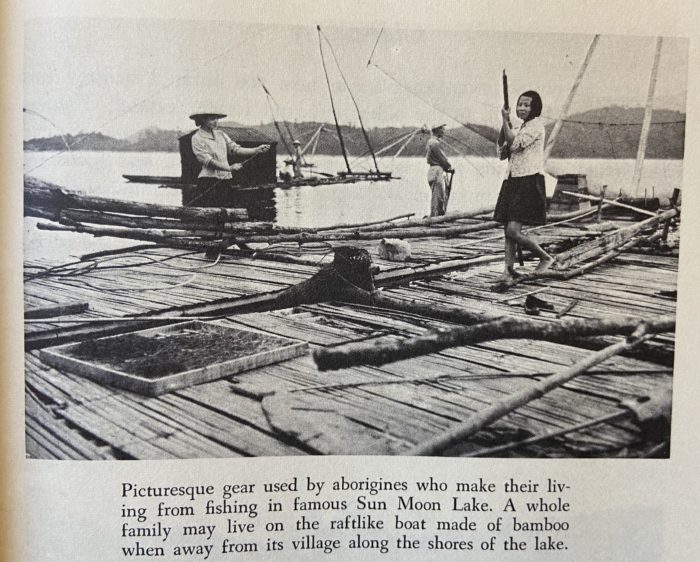
Outside of the body of the text, what may be depictions of indigenous peoples can be found in the decorative sketches between paragraphs, as well as on maps of the island, where we are told that “head-hunting used to be one of their favorite occupations.” There is also a photograph of some fishermen with “picturesque gear.” Beyond their “festival dances,” however, the reader will learn nothing about their culture, while Chinese opera, dragon boat festivals, and temples will get ample discussion.
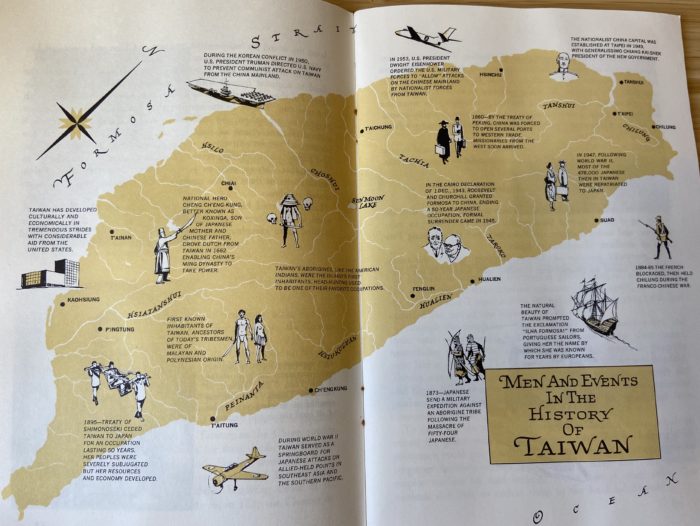
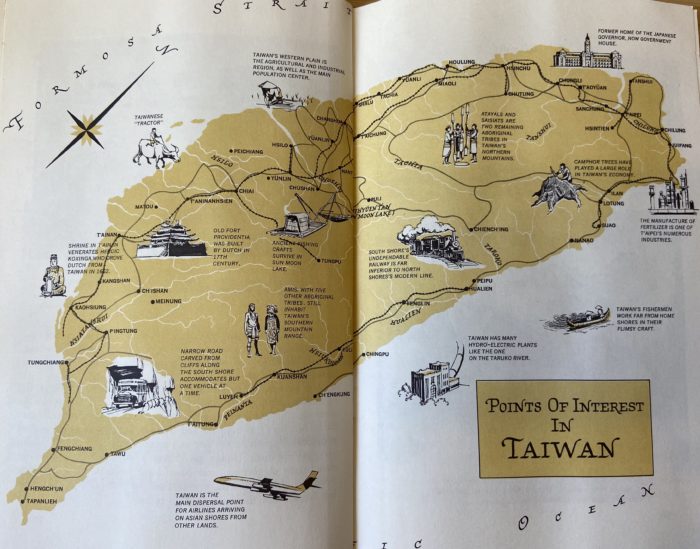
I have rarely comes across something related to Taiwan from the 1950s or 1960s that does not thrust me into the cold war environment of the time. This booklet is a strange work that tried hard to scrape the politics from its pages. Of course, there is an obligatory line about the Communist victory in 1949 leading to a large influx of new arrivals on the island, along with the fact that now Taiwan, “claims to be the government of all China.” (p20) There is a brief mention of the provincial assembly and its nice location.
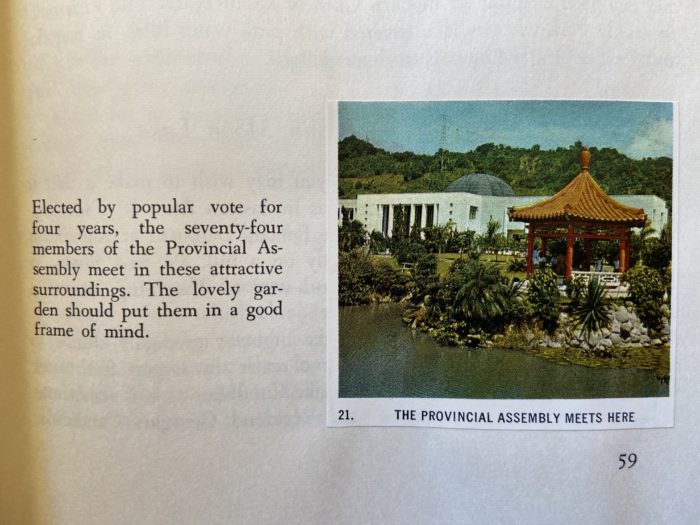
Beyond this, however, there is almost no reference to the mainland or the desire to recover it. The only place the mask slips, and we get a brief mention of the political context is in a short description of the current system of government:
“Elections of various kinds are held at intervals, but in practice most of the power, both political and economic, remains in the hands of President Chiang and a group of high officials, including many military men, who came from China with him in 1949. Although perhaps not so democratic as some may wish, this government has successfully carried out a land reform and launched large-scale schemes to increase agricultural and industrial production – with the help of massive amounts of financial aid from the United States – and has thus contributed greatly to improving the way of living of the average Taiwanese.” (p21)
“Not so democratic as some may wish” is of course, a rather gentle way of not talking about the White Terror and Taiwan’s ongoing state of martial law under a Nationalist party dictatorship.
The Japanese colonial period too is given a mostly gentle treatment, even if it acknowledges revolts and resentment. About 90% of the coverage of the period across almost five pages (p16-20) is a list of the “major achievements of the Japanese” who helped lay “some of the foundations for future economic prosperity.” Of course, along the way, wide powers were given to the colonial police and “their methods did little to endear them to the local inhabitants.”
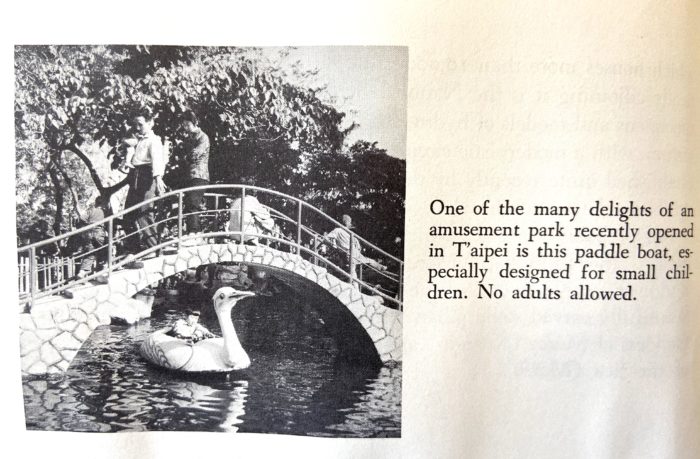
The rest of the volume, much of which focuses on economic transitions after 1945 and some rather disappointing attempts to introduce Chinese culture and Confucianism in a few short pages mostly fits the “optimistic” and “modernist” tone Monk was referring to, plus some regular reminders that the United States is providing extensive economic aid to the island. It seems almost astonished at the acehivements of the island’s people with its “small but highly productive farms” and its “booming industries and trade”:
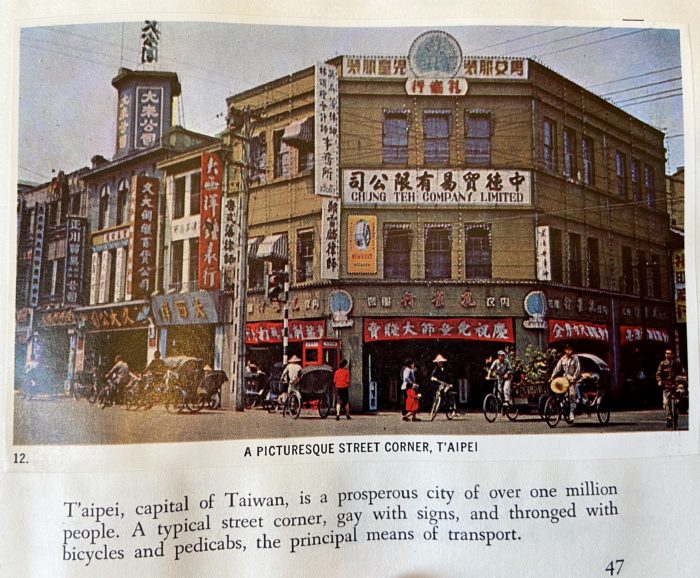
“Somehow, although it is a crowded place and growing more crowded every year, with a shortage of good cultivable land and of many of the materials needed for industry, the people have achieved a higher standard of living than in any part of eastern Asia except Japan.” (p3)
Taiwan, it seems, is populated by a happy people, and Taipei, “with a population of more than a million, its gaily festooned streets and sidewalks are usually thronged with people, black-haired and olive-skinned, dressed in bright clothes, and hustling about in pedicabs or on bicycles, their chief means of transport…” (p45)
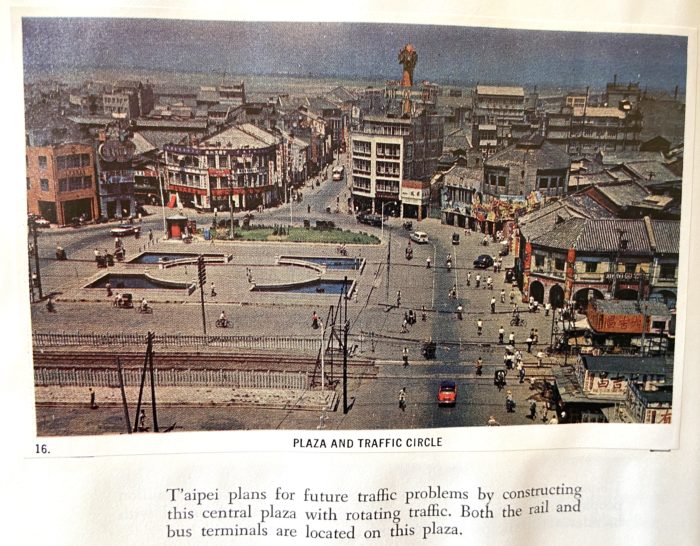
Despite the hustle and bustle of the modern life it sees all around the island, Taiwan of 1968 is still an “out-of-the-way” place where one can enjoy a relaxed tropical experience:
“This lush green island lying across the Tropic of Cancer is increasingly becoming an attraction for the tourist seeking a place as yet uncluttered with tourists, and a number of good hotels and motels have recently been opened in major cities and towns. In the capital city of T’aipei there are now some thirty hotels, a few of which can be classed as luxurious.”
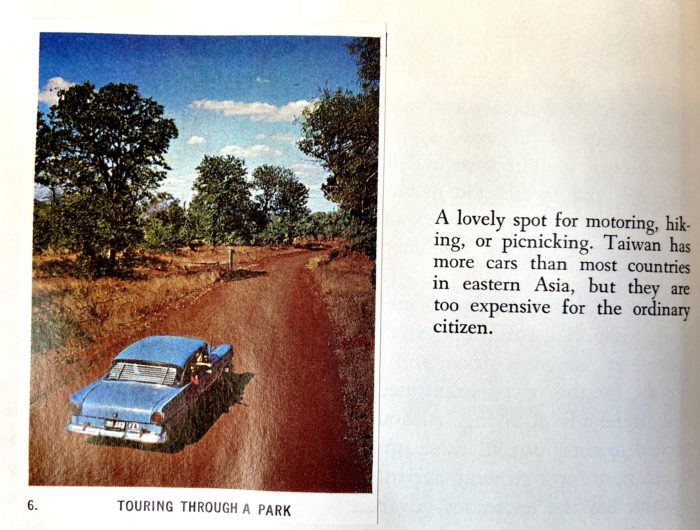
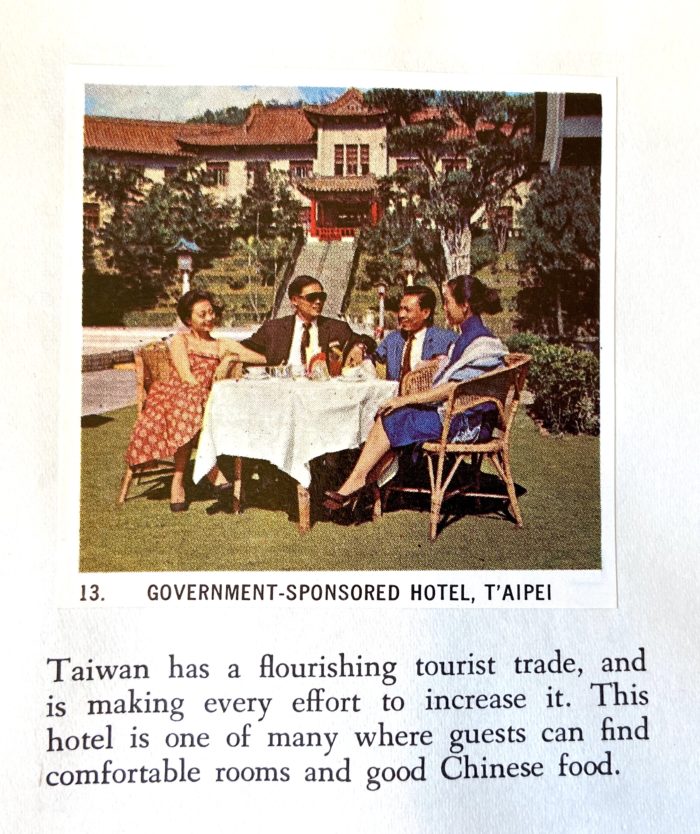
By the time this volume came out, the series was apparently wrapping up, and seems to have moved away from primarily being a child’s educational text. The final dozen or so pages feels more like a tourist brochure, with sections on locations to visit, recreational “resorts” and places to stay. The National Palace Museum, opened in 1965 gets several pages of attention. Janice Monk has argued that the volumes authored by Alice Taylor herself seem to be somewhat better in their depictions of women. If so, I’m not sure this volume shows that effort. While images of women active in agricultural labor can be found in drawings as well as photography, other depictions of women seem limited to adding the occasional “pretty and stylish lady” or colorful dresses and there is not even the usual mention of the powerful figure of Soong Mei-ling (“Madame Chiang Kai-shek”) in the work.
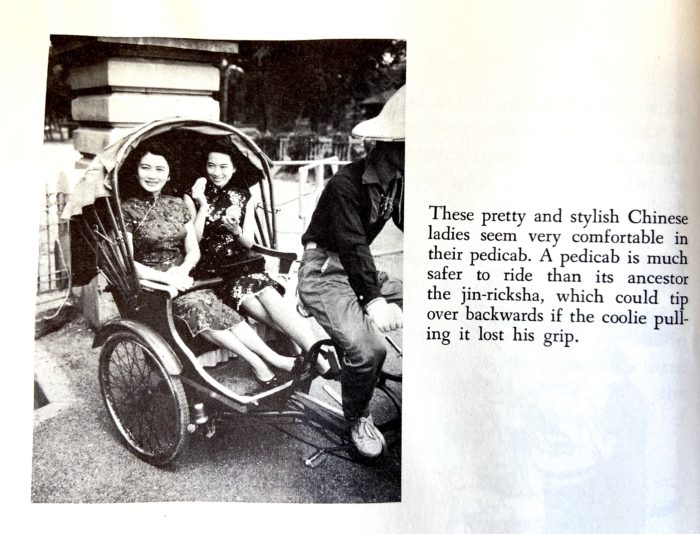
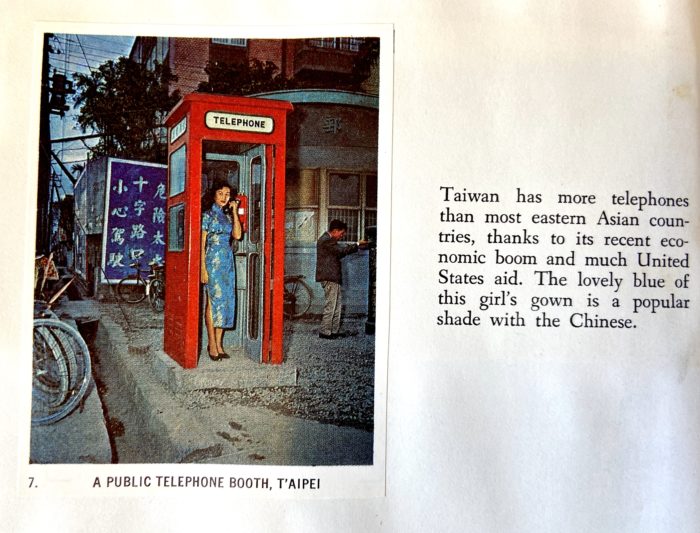
This volume of the Around the World Program series is thus a curious publication in the way it seems to fit oddly astride several genres, one that I found most interesting in terms of all that was unsaid about a Taiwan in the late years of Chiang Kai-shek’s rule, rather than any of the particular biases of its coverage. For anyone who owns a more extensive set of these books, it might be interesting to explore patterns across them, and learn more about whether the books were put to any extensive use in 1960s classrooms.
Janice Monk, “Women’s Worlds at the American Geographical Society” Geographical Review 92.2 (2003) ↩
Monk, 249. ↩
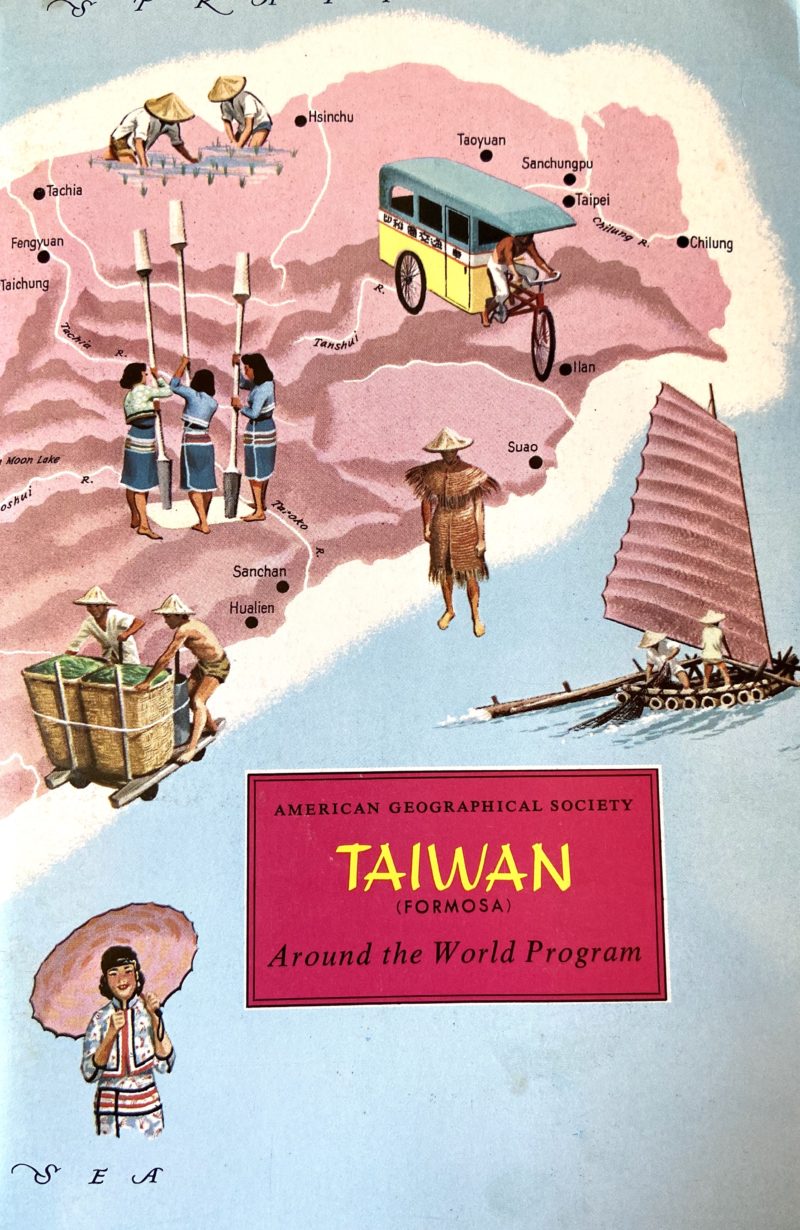
Cool find. It sounds a lot like the “apolitical” take on things I used to get in the National Geographic a few years after that. Although now that I think about it, Nat Geo was sort of political in that they did not talk about Communism much at all. The people of Angola had interesting customs and colorful costumes and there was nothing political going on there. Estonia was the same, which is sort of a political statement in America during the Cold War.
One book I have found useful for understanding popular American views of Asia (and which students like) is Christina Klein, Cold War Orientalism: Asia in the Middlebrow Imagination, 1945-1961, (University of California Press, 2003).
Interesting. I don’t have much experience (past my own childhood) reading geographical texts of this kind. Perhaps I should dip into the Nat Geographic agai. Cold War Orientalism is a a very useful book in this regard, and its insights would have gone nicely in this post too.
The “touring though a park” photo with the blue car was probably not taken in Taiwan. The ZA sticker indicates that the car was from South Africa, so the photo was probably taken in South Africa itself or a neighbouring country. The car is driving on the left hand side of the road, more or less, which is correct for South Africa and wrong for Taiwan.
Well spotted! As soon as I saw that photo I couldn’t help thinking that looked like nowhere I have ever seen in Taiwan, but you went the extra step and looked closer at the back of that car.